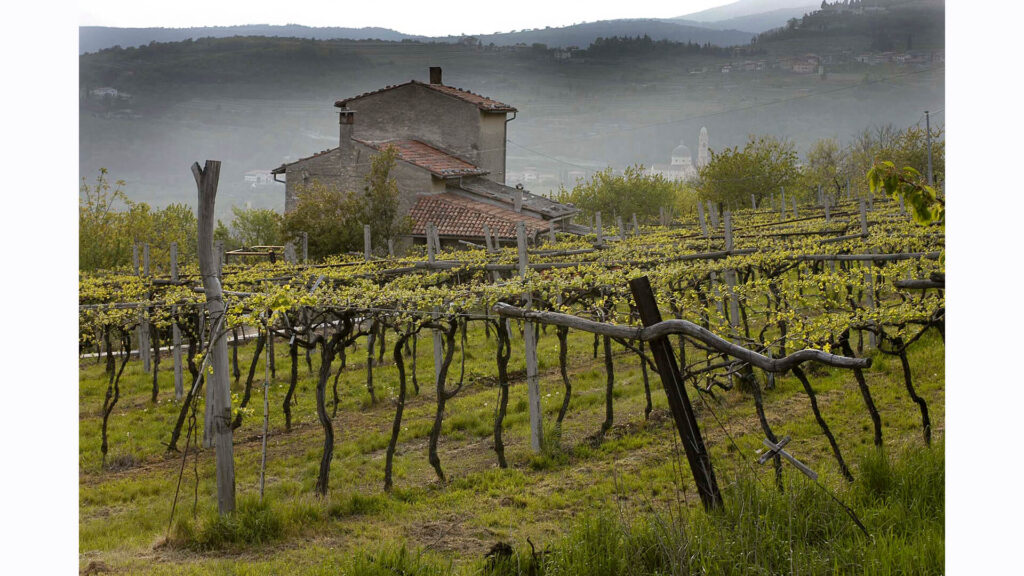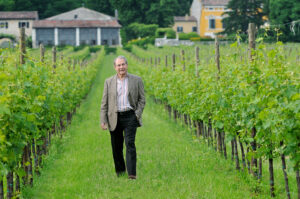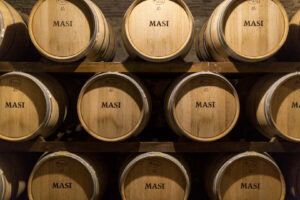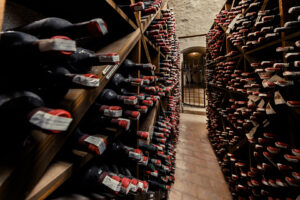[vc_row][vc_column][vc_column_text]
by Lars Leicht
As it often does in Italian wine country, a lively debate has recently begun between the traditionalists and innovators of Piedmont. This one is centered on the value of single-site, “cru,” or “Bric” Barolo versus that of multi-vineyard blends. With a nod to the chicken-or-egg theorem, the blends came first: Combining complementary characteristics from different sites, they are a point of pride for old-school winemakers, who defend the classic style as the true and righteous path to a harmonious, complex reflection of terroir. Certain subzones provide more structure and intensity, others finesse and elegance, still others suppleness, and the Barolistas build their reputation by mixing those elements into a well-guarded “secret sauce.” Yet it’s the “Bric” Barolos that command top dollar: Such is the attraction of showcasing a single plot of land as a unique expression of place.
Meanwhile, in the Valpolicella region some 225 miles east, a similar discussion about top-production Amarone is underway—and Raffaele Boscaini of Masi Agricola is passionate about it. “How much has Amarone ‘become’ the territory?” he asks, alluding to the extent to which it reflects its terroir. The answer is “very little”—and that, he adds, is a shame.

As seventh-generation leader of his family’s wine company in Sant’Ambrogio di Valpolicella near Verona, Boscaini is closely tied to the territory of which he speaks. His grandfather Guido essentially invented the Ripasso method, in which freshly fermented Valpolicella wine is “re-passed” over the pressings of dried Amarone grapes to make a wine of intermediary complexity. And for his contributions both to improved production methods in the appellation and its promotion around the world, his father, Sandro, earned the nickname “Mr. Amarone.”
Does that qualify Raffaele as Mr. Amarone Jr.? He prefers to think of his potential role as the less diminutive Mr. Amarone II, he says, as these are different times with different challenges. But the fundamental question he is confronting is this: Is Amarone more about technique or terroir? “It is true that Amarone is developed in the winery,” Boscaini says, referring to the 90- to 120-day appassimento or withering process that the grapes undergo in aerated lofts before vinification. A traditional loft, called a fruttaio, has large windows that facilitate airflow in good weather but can be shuttered in damp or rainy conditions. “Appassimento characterizes Amarone, but it also takes place in our microclimate; [it’s] still subject to local weather after the actual harvest,” he points out. “If we approach it more as a winery wine than a territory wine, we risk standardization.”
As an example of the graces of single-vineyard Amarones, Boscaini likes to point to two wines in Masi’s Cantina Privata series: Mazzano and Campolongo di Torbe. In the 1950s, his grandfather started separately vinifying these two sites, which are just under a mile apart as the crow flies; sit at roughly the same elevation—350 to 415 meters above sea level; and are planted to the same mix of indigenous grapes, namely Corvina, Rondinella, and Molinara. But their soils, and thus their wines, are very different. The slopes of humus-rich, crumbly limestone in Mazzano are terraced by traditional stone walls called marogne. Wind exposure here keeps the grapes free of botrytis, helping to yield austere, edgy, masculine wine, says Boscaini. The soils of Campolongo di Torbe are also loose but well drained and more volcanic, with rocky red Eocenic limestone indicating a high iron content that contributes minerality to the finished wine. Because there is less wind here, the grapes have more glycerine, resulting in soft tannins, elegance, and hints of almonds.

Of course, Boscaini doesn’t completely discount multi-vineyard blends, but he maintains that they too must reflect their terroir. All of the fruit for Masi’s Costasera Amarone, for example, comes from southwest-facing sites in Valpolicella’s Zona Classica; costa sera is the local term for a first press vineyard exposed to warm afternoon sun so that the grapes achieve the ripeness ideal for appassimento.
As for the larger Valpolicella area? Boscaini firmly believes that young, non-appassimento wines from any subzone, at the base of the stylistic pyramid, have a responsibility to be imminently drinkable, designed as they are for everyday consumption—but just like Amarone, Valpolicella should reflect where it comes from. “[It] must have dignity, like any wine,” he says, “presentable in different structures and different ages. But the scope of Valpolicella is to allow you to drink more than one glass to accompany a meal.”
Like Barolo (and for that matter Burgundy), Valpolicella is home to diverse microclimates with variations in soil, altitude, exposure, and weather conditions. But the idea that one producer might have access to—and therefore the ability to blend from—vineyards in all 11 valleys of Valpolicella has never become a reality. Nor is it ever likely to, given the logistical challenges posed by the region’s size: The acreage under vine there is almost four times the total area of Barolo, and the average vineyard in Valpolicella twice the size of that in Barolo. And there are historical as well as geographical differences: For instance, in the 19th century, Barolo producers deliberately looked to Burgundy as a production model, while the top-tier wine of Valpolicella, Amarone, was born of what could be described as no less than a happy accident.[/vc_column_text][vc_row_inner][vc_column_inner width=”2/3″][vc_column_text]In ancient, cooler times, simple Valpolicella could not muster alcohol content high enough to withstand transportation; drying the grapes provided extra sugar to ferment into alcohol for travel-worthy wines. The result was Recioto, a fruitier expression. Sometimes, however, fermentation would run its course to fully convert sugars into alcohol and yield a dry wine; initially considered a mistake, the process eventually became a choice. Being the opposite of sweet, the result was called amaro, Italian for “bitter”; the suffix “-one,” which indicates large size, was added to make the name Amarone, or “the big bitter [dry] one.” It’s been marketed as such for no more than 75 years.
Over the decades, the consortium responsible for appellation rules gradually started to tighten regulations on yield and bottles produced, hoping to make Amarone more premium. But to many winemakers, especially Raffaele Boscaini—who, for the record, does not belong to the consortium—it is not enough.
“Amarone needs more,” says Boscaini. “It needs more qualitative steps; it needs more vision. They have this treasure in their hands but they don’t know what to do with it.”
For example, Boscaini asserts, international varieties such as Cabernet Sauvignon and Merlot should be banned from Valpolicella, Recioto, and Amarone (this is already a Masi house rule). He believes Amarone should be made exclusively from subzones, select hillsides, and single sites. Yield should be further reduced, he adds, and stricter selection enforced.
“Each producer should have some small production Amarones to show diversity,” says Boscaini. “There is still so much to discover and study deeply for Amarone to truly represent this territory.”[/vc_column_text][/vc_column_inner][vc_column_inner width=”1/3″][vc_column_text] [/vc_column_text][vc_column_text]
[/vc_column_text][vc_column_text]

[/vc_column_text][/vc_column_inner][/vc_row_inner][/vc_column][/vc_row]
